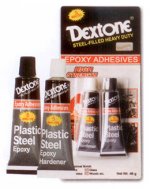Does anyone have data on the thermal behavior of hand matched TO92 device pairs (wrapped in copper foil or inserted into a little heat sink) when one side sees a sudden change in dissipation? Typical TO92's are rated at 120C/W so a few mW could give a step change of a mV or so in Vbe.
TO-92 plastic are not ideal for matched pairs regarding thermal matching. I've seen these wander over cycle times of minutes, and thermal mis-matches never balance out (even in TO-18 but the old TO-18's mounted in a ceramic heat block seem to track much more closely).
However, my recent designs have used TO-92 because TO-18's have all but disappeared, some can be found at exorbitant prices but the ceramic heat blocks are even harder to find. I generally mount the flat faces together using silicone compound and a plastic tie to hold them together.
You might be able to estimate the thermal time constants from the package material. ON Semi give this as being made up from approx. 73% SiO2 (fused silica) with 20% novolac resin, making up the majority of the 112 mg plastic and a lead frame of steel approx 100mg, while the silicon will give a fast TC as it is is only .075mg.
However, my recent designs have used TO-92 because TO-18's have all but disappeared, some can be found at exorbitant prices but the ceramic heat blocks are even harder to find. I generally mount the flat faces together using silicone compound and a plastic tie to hold them together.
You might be able to estimate the thermal time constants from the package material. ON Semi give this as being made up from approx. 73% SiO2 (fused silica) with 20% novolac resin, making up the majority of the 112 mg plastic and a lead frame of steel approx 100mg, while the silicon will give a fast TC as it is is only .075mg.
I put flat faces together and use shrink tubing to encase it. Could one pass current through one side as a heat source and use the silicon diode juntion on the other side as the temperature sensor? Strip chart it and get time constant for heat input at various loads. I guess silicon is as temperature sensor is k y good for cryogenic temps. Add a small thermocouple or NTC thermistor bead in the heatshrink tube for thermometer.
Last edited:
In isolation the drift is hard to cancel out and even harder to predict given the high thermal resistance (IIRC 200C/W, whereas the TO-126 is closer to 100-120C/W) and resultant thermal inertia.
However in a practical circuit either as LTP or a complementary input pair or output stage, once the pair itself is enclosed in a feedback loop and any component imbalances are trimmed out, it becomes less of an issue.
We've used juma's four-transistor preamplifier with 2SK170/J74 and BC337/327 and all four are thermally coupled to each other with a piece of aluminum. Overall drift is less than 1mV from cold to full operating temperature and over a four hour operating period, and running the transistors hot helps quite a bit so they don't run into Class B operation.
When running uncoupled the offset was horrendous, 30mV in each direction alternating every 30 seconds, as can be expected. This is with the same bias conditions as above, and with the same feedback structure.
I realise you're looking for data, and none of this will help for a non-audio application or a circuit with no feedback, but there it is.
However in a practical circuit either as LTP or a complementary input pair or output stage, once the pair itself is enclosed in a feedback loop and any component imbalances are trimmed out, it becomes less of an issue.
We've used juma's four-transistor preamplifier with 2SK170/J74 and BC337/327 and all four are thermally coupled to each other with a piece of aluminum. Overall drift is less than 1mV from cold to full operating temperature and over a four hour operating period, and running the transistors hot helps quite a bit so they don't run into Class B operation.
When running uncoupled the offset was horrendous, 30mV in each direction alternating every 30 seconds, as can be expected. This is with the same bias conditions as above, and with the same feedback structure.
I realise you're looking for data, and none of this will help for a non-audio application or a circuit with no feedback, but there it is.
Scott--- look on THAT Corp's site and find the old guys. In a past life they gurued at dBx, and used TO92 pairs in Al tape as VCA parts. They may recall some clues.
Yes, I know Les and Dave has passed away. I was just curious before I ran my own experiments. The application is for open-loop current transfer where constant power is difficult or impossible to achieve.
- Status
- This old topic is closed. If you want to reopen this topic, contact a moderator using the "Report Post" button.
- Home
- Amplifiers
- Solid State
- Thermal crosstalk of TO92 matched pairs
